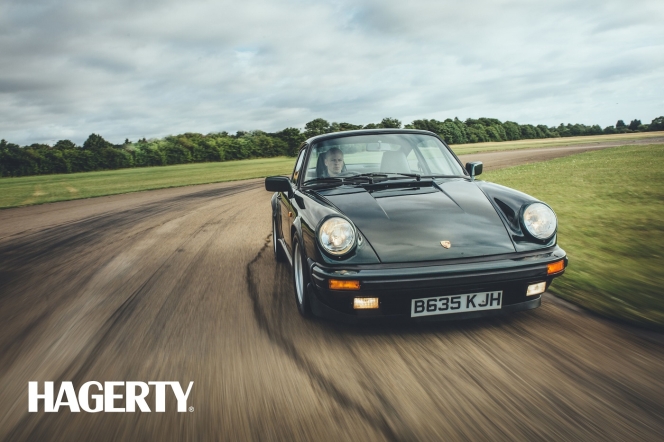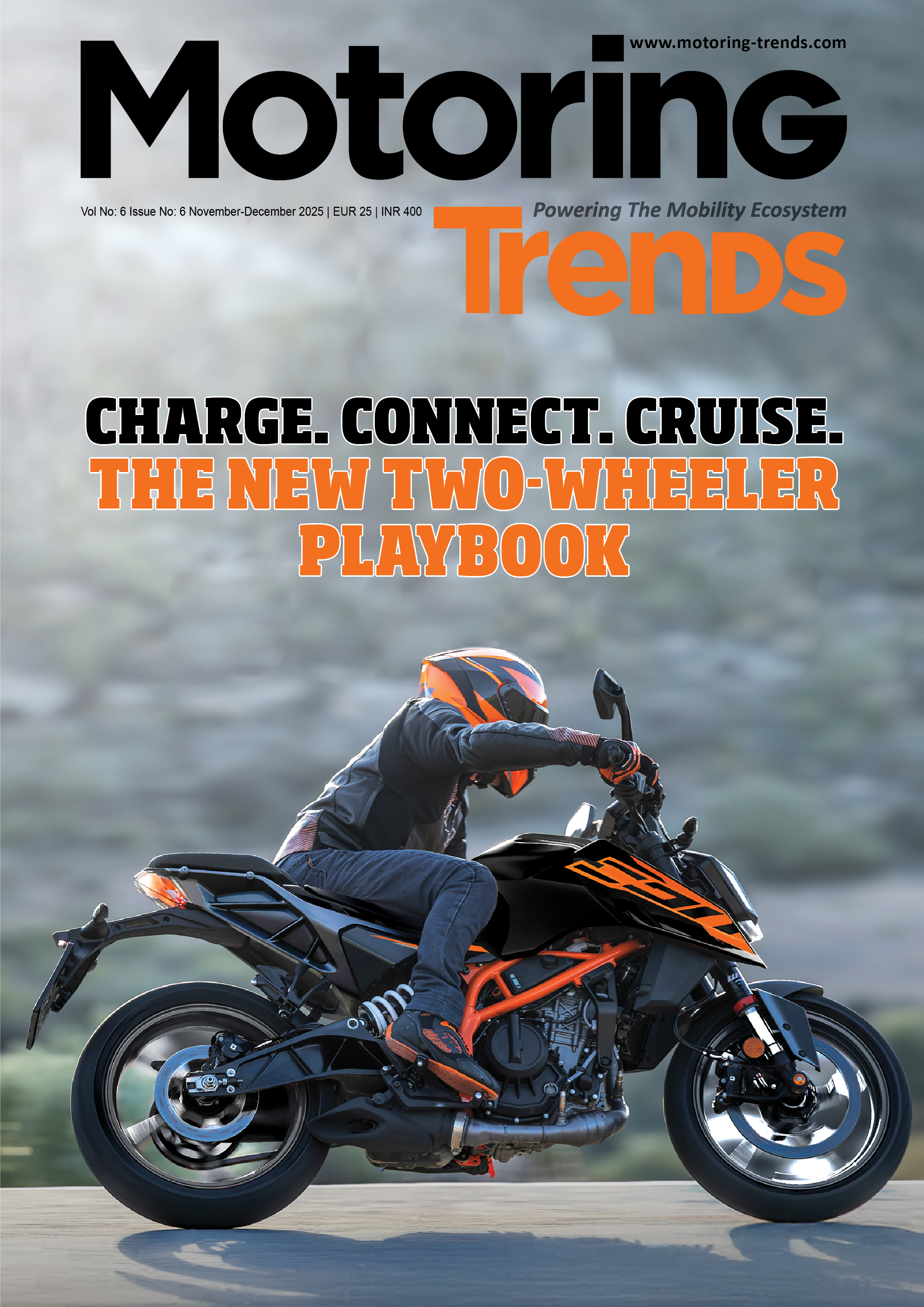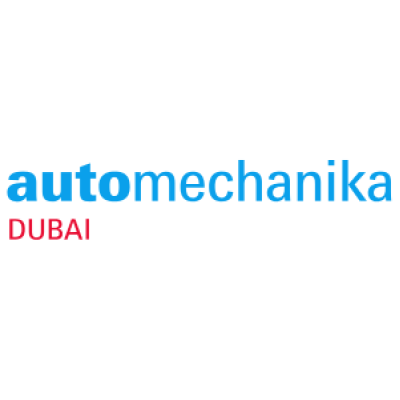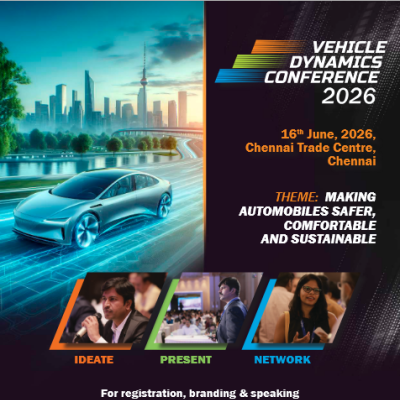AVL To Accelerate The Vision Of Smart And Connected Mobility: Urs Gerspach
- By Sharad P Matade
- June 22, 2021

AVL is the world’s largest independent company for development, simulation and testing in the automotive industry and in other sectors. As a global technology leader, AVL provides concepts, solutions and methodologies in the fields of e-mobility ADAS and autonomous driving, vehicle integration, digitalisation, virtualisation, big data and much more.
In an interview with Sharad P Matade, Urs Gerspach, Executive Vice President of Test Systems and Global Operations, Instrumentation and Test Systems at AVL, shares his thoughts on the growth enablers and the company’s capabilities to cater to a wide range of demand in the automotive testing business.
 What is the impact of the Covid pandemic on AVL’s testing business?
What is the impact of the Covid pandemic on AVL’s testing business?
There is an impact, no doubt about it. The effect was much stronger last year; the customers constantly postponed their decisions about the orders of lab projects. However, this year, we are seeing a sudden improvement in the situation. In the first quarter of this year, we received massive orders of over 180 test systems for battery test labs. The situation is improving very fast, and the investments are being released by the OEMs. Until last year, the trends were not clear. Now we see a fast and strong growth of the passenger car industry towards electrification business. We are also witnessing the growing focus on fuel cells in the commercial truck segment. AVL is very well on track regarding its turnover and our margins for this year.
What is the reason for the increased demand of battery test labs?
In the past, many OEMs bought their battery cells from cell manufacturers like Panasonic, LG, CATL etc. and used these third party cells to build their own batteries. Several passenger car OEMs changed their strategy and decided to develop their own battery cells. Increased range, reduced charging time and lower costs are important key factors to convince customers to buy electric cars. Not just the development of the battery, but the combination of Battery, Inverter, E-Motor and Charging Infrastructure is important to develop a successful electric car. For this development, you need new test equipment such as battery cell cyclers, conditioning systems, climate chambers, automation and lab management software. The entire car is tested on High Voltage Powertrain Test Beds and Chassis Dynos where AVL has been the market leader for many years.
 Europe is gearing up for Euro-7. What is it? How will it influence the testing business?
Europe is gearing up for Euro-7. What is it? How will it influence the testing business?
EU-7 will set stricter limits for CO2 and particle emissions. We expect PM10 (particulate matter with a size of 10 μm) will be introduced for Euro-7 and we have therefore developed measurement systems which can measure PM10.
It is also important to measure the CO2 emissions of combustion engines as precisely as possible. It is not just about compliance with environmental standards, but also about fuel consumption. We also deliver Portable Emission Measurement (PEM) systems for measuring emissions in real-time conditions on the street. While driving the car under real conditions, you might not execute a certified test run under predefined environmental conditions, therefore, other emissions will occur that need to be measured and analysed. AVL offers a wide range of in-vehicle measurement systems and software to determine what is actually coming out of the exhaust - in real driving conditions.
But there will also be a focus on non-exhaust emissions, particularly brake dust. Electric vehicles don’t emit exhaust emissions, but there is still brake and tyre dust. We have developed entire test systems to test real brakes under real-time conditions.
What would be the significant growth drivers in the traditional combustion engine business for AVL testing divisions?
As mentioned, the Euro-7 regulation will be one of the main drivers for AVL in the future. Besides all the other technologies like ADAS, every engine will be partly electrified either as a pure Hybrid, Plug In- or mild Hybrid. The technology of an Integrated Combustion Engine (ICE) can also be used to run with pure hydrogen. AVL is developing several engines for various customers that convert existing ICE technologies in new concepts.
We are also working on measurement technologies for synthetic fuel. AVL is working closely with Formula One teams as they will soon run their engines with synthetic fuels.
AVL has played a significant role in the development of the diesel engine in Europe. However, many OEMs are talking about discontinuing diesel engine vehicles in the near future. Do you see this as a challenge?
This trend will not have a great impact on our testing division. It will have a larger influence on the powertrain development division for diesel engines. If you take a look at the share of electrified cars in Europe - especially in Germany - they only account for 10 percent of the total vehicles; the remaining share of cars are still powered by combustion engines.
The combustion engine will still remain relevant for a while. However, increasingly in the form of a hybrid powertrain. AVL is therefore converting existing test beds for the car manufacturers so that they can be used to test hybrid vehicles. There are several customers who request pure electrical test benches. Some of our customers come to us with the requirement to completely convert existing combustion engine test fields to electrification test systems.
 Between electric vehicles and hybrid vehicles, which one holds more promise in India in the near term and the long term?
Between electric vehicles and hybrid vehicles, which one holds more promise in India in the near term and the long term?
I believe, in countries where the electricity network is not yet fully developed, hybrid cars will provide more flexibility, combining the possibility to run with fuel for an overland trip and electrified within the city.
In India, two-wheelers might have a faster increase in electrification similar to the development in China. ICE engines might keep dominating for a while, especially for the commercial vehicle. The introduction of pure battery electric vehicles mainly depends on how fast India is able to provide the necessary high-voltage charging infrastructure.
What about the AVL Tech Centre in India?
Our Tech Centre in India is one of our strongest Competence Centre for turnkey projects. AVL India is a very strong and reliable partner when it comes to planning of entire test fields including plant facilities. In the field of Powertrain Development, our India Tech Centre focuses on all three technologies – ICE, electrification and hybridisation – equally in all segments. AVL is an engineering company assisting customers with all types of mobility technologies. We recently got one of the first orders for fuel cell test systems from an Indian customer. So there is something exciting happening in our Tech Centre in India.
 What about the revenues? How much does your testing division contribute to the whole company?
What about the revenues? How much does your testing division contribute to the whole company?
In 2020, the company generated a turnover of EUR 1.7 billion, of which 12 percent was invested in R&D activities. The testing division contributes with around 50 percent of the turnover.
What are the challenges in the business?
One of the biggest challenges is definitely to cover the growing bandwidth of technologies. A couple of years ago, we were only talking about ICE vehicles. Today, we are talking about ICE vehicles, hybrid vehicles, electric vehicles, batteries, ADAS and autonomous driving, digitalisation, cybersecurity and big data. AVL has built comprehensive competences to accelerate the vision of smart and connected mobility.
If you are an engineer, you have a wide range of technologies to specialise in. So one of the challenges is to find the right engineers to work on these different technologies.
What is the latest on safety by AVL?
One of the issues that is yet to gain the industry’s attention is fire safety in electric vehicles. AVL has been associated with fire marshals in Europe. Fire brigades realised an increase in accidents with Battery Electric Vehicles (BEV). Not only accidents but also burning BEVs in parking garages are a big challenge. These vehicles are very difficult to extinguish due to the chemistry of the lithium-ion battery.
AVL has developed a firefighting system which can extinguish a lithium-ion battery fire on the testbed or for fire brigade usage. It is a unique patented system that runs on liquids such as water or gases like nitrogen to extinguish battery fires. We conducted a couple of test series with hybrid batteries. A burning battery with 18 metres of flame height and temperatures of up to 1,500 degrees Celsius could be extinguished in one minute. (MT)
- Hagerty UK
- Vehicle Excise Duty Exemption
- VED Exemption
- Historic & Classic Vehicles Alliance
- Classic Cars
UK Chancellor Maintains Vehicle Excise Duty Exemption For Classic Cars
- By MT Bureau
- November 27, 2025

The UK's cherished classic car community can finally breathe a collective sigh of relief. The decisive action by Chancellor Rachel Reeves in the Autumn Budget to maintain the Vehicle Excise Duty (VED) exemption for vehicles over 40 years old has ended a prolonged period of uncertainty, securing a stable future for this vital sector. Mark Roper, Managing Director of Hagerty UK, welcomed this clarity, noting that the confirmed freeze on fuel duty further solidifies a supportive environment for owners. He underscores that this is a significant win for the GBP-7.3-billion industry that supports over 100,000 jobs and contributes GBP 3 billion annually to the UK economy, all while championing an inherently sustainable form of motoring.
This perspective on sustainability is reinforced by Dale Keller, CEO of the Historic & Classic Vehicles Alliance (HCVA), who affirms that the tax exemption logically aligns with environmental objectives. Classic vehicles, preserved as moving heritage, have a negligible lifecycle carbon footprint compared to new manufacturing and are driven infrequently. The original principle of the exemption remains valid, as applying a modern tax to these rarely used assets would be inequitable.
Alongside the VED news, the Chancellor confirmed the continuation of the MOT exemption for classic cars, though this will remain under review. On this point, Roper of Hagerty UK strikes a note of caution, observing that many within the industry advocate for an annual roadworthiness check. He notes that a great number of responsible classic owners voluntarily submit their vehicles for an MOT each year, valuing the independent assurance of safety and mechanical integrity it provides.
For Hagerty UK, as a specialist insurer deeply embedded in this world, the government’s affirmation is a powerful endorsement of the sector's cultural and economic value. Through its vibrant Clubhouse at Bicester Heritage and unique events like RADwood, Hagerty is actively fostering this passionate community. Similarly, the HCVA continues its mission to protect and promote the diverse ecosystem of specialists, restorers and businesses that form the backbone of this multi-billion-pound industry, ensuring its legacy for generations to come.
Mahindra Racing Extends Formula E Involvement With GEN4 Manufacturer Commitment
- By MT Bureau
- November 26, 2025

Mahindra Racing has solidified its long-term future in electric motorsport by confirming its manufacturer commitment to the GEN4 era of the ABB FIA Formula E World Championship, starting in 2026/27. This announcement, made during the unveiling of its new M12Electro race car in India, extends a relationship that began in 2013 when Mahindra stood as both a founding team and the first OEM to join the all-electric series.
The team's current trajectory underscores the significance of this pledge. Following a dramatic 18-month transformation under CEO and Team Principal Frederic Bertrand, Mahindra Racing has evolved from a backmarker into a consistent front-runner. This resurgence was powered by the redesigned M11Electro, in which drivers Nyck de Vries and Edoardo Mortara collectively secured five podium finishes in Season 11, catapulting the squad to a stellar fourth place in the world championship. The newly launched M12Electro is the intended vehicle to maintain this status as a top-five contender and a regular threat for podium positions in the forthcoming season.
The technical landscape for GEN4 promises to further electrify the sport. The next-generation cars will boast a peak race power of 450 kw, with a potent 600 kw available in ATTACK MODE to empower aggressive overtaking. Enhanced strategic possibilities will come from a race energy capacity of up to 55 kWh and a remarkable 700 kw of regenerative braking. In a continued commitment to sustainability, the GEN4 chassis will be produced from 100 percent recyclable materials and will feature two distinct aerodynamic configurations – high-downforce for qualifying and low-downforce for races – to optimise performance.
Mahindra's ambition is to leverage this new regulatory chapter to build on its renewed momentum, chase incremental gains and establish itself as a confirmed championship contender against elite manufacturers like Porsche and Jaguar. This competitive platform also serves a broader purpose, aligning with the Mahindra Group’s sustainability initiatives. The team, the first in Formula E to earn the FIA’s Three-Star Sustainability Accreditation, has embarked on its ‘Planet Positive’ programme. This initiative is dedicated to driving positive impact in communities and economies, accelerating climate solutions and using the intersection of sport and technology as a catalyst for a better future.
R Velusamy, Chairman, Mahindra Racing, said, "Mahindra Racing has always been a symbol of our commitment to the Race to Road journey – where cutting-edge innovation on the track directly shapes the clean, intelligent and high-performance mobility solutions we deliver to customers. Formula E is a powerful platform for innovating new technology, giving us the ability to experiment, learn and advance electric powertrain efficiency, sustainable materials and software intelligence. As we step into the GEN4 era, our ambition only grows stronger. Continuing this journey till 2030 is a testament to our belief in the sport, in electrification and in India’s role in leading global sustainable mobility. We are proud to champion this future, and GEN4 represents an exciting new chapter for Mahindra Racing and the Mahindra Group.”
Frederic Bertrand, Team Principal, Mahindra Racing, said, “I’m delighted to share this announcement that Mahindra Racing will remain in Formula E as a manufacturer for the GEN4 era. As a team, we have been on a fantastic journey over the past two seasons. What we have built and achieved as a group has been exceptional, and with this announcement, we now have the platform to keep growing and developing and achieve even greater success in the future. None of this would be possible without our colleagues across the Mahindra Group. They have bought into the project and the vision, and we will keep working hard to not only make India proud but also showcase exactly why it has the potential to be a major player on the world stage in the automotive and technology industries. Their enthusiasm to ‘Scream Electric’ is hugely inspiring to the whole team, and we will continue to represent them with pride in this next exciting chapter of our Formula E story in the coming years.”
Jeff Dodds, CEO, Formula E, said, “We’re thrilled to confirm Mahindra’s long-term commitment to the GEN4 era of the ABB FIA Formula E World Championship. As one of our founding teams, Mahindra has been with us since the very beginning, consistently championing electric racing and innovation. Their bold vision for sustainable mobility and continued investment in advanced EV technology perfectly align with Formula E’s mission. Mahindra’s enduring presence not only strengthens our position in a key market but also reinforces Formula E’s role as a global platform for driving positive change. We’re excited to see what they’ll achieve in this next chapter of performance and progress.”
Marek Nawarecki, Senior Circuit Sport Director, FIA, said, “Following the GEN4 reveal and the really positive sentiment reported, we are pleased to announce Mahindra as the sixth manufacturer to commit to Formula E’s GEN4 era. This is testament to the relevance of the road map we are implementing in Formula E for OEMs. GEN4 underscores just how far the ABB FIA Formula E World Championship has come since 2014 and we are looking forward to continuing this journey with Mahindra as one of the founding teams and partners.”
Mahindra Charts Aggressive Decade Of Growth Across Auto, Farm, CV And Last-Mile Mobility Businesses
- By MT Bureau
- November 21, 2025

Mumbai-headquartered conglomerate Mahindra Group has unveiled an ambitious long-term roadmap across its core mobility and equipment businesses, detailing plans for accelerated growth in the automotive, farm equipment, commercial vehicle and last-mile mobility segments.
The strategy, presented at its Investor Day 2025, underscores the Group’s intent to leverage India’s expanding economy while deepening global market participation.
Mahindra expects its consolidated automotive business to grow 8x between FY2020 and FY2030, driven primarily by a stronger push in sports utility vehicles (SUVs) and light commercial vehicles (LCVs).
The company aims to become the world’s fastest-growing SUV brand. Its product strategy is rooted in new-age platforms such as INGLO and NU_IQ, enhanced digital architecture under MAIA and Adrenox, and continued investment in safety and performance.
At present, Mahindra holds more than 26 percent revenue share in India’s SUV segment as of the first half of FY2026. Strong consumer traction for models including the Thar, XUV700, XUV3XO and the Born Electric (BE) series is expected to support the company’s international expansion to right-hand-drive and left-hand-drive markets across Europe, Australia, Africa and other regions.
Strengthening leadership in LCV segment
The LCV business, where Mahindra commands 54.1 percent volume share in vehicles under 3.5 tonnes (as of H1 FY2026), is set to be another pillar of growth. The product range has broadened through the Supro, MaXX and Veero platforms, including CNG and electric variants. The company is also preparing for wider adoption of lifestyle pickups, led by the upcoming Global Pik Up.
Mahindra’s LCV strategy emphasises best-in-class total cost of ownership, reduced downtime, enhanced comfort and technology integration, with the segment also targeted for eightfold revenue growth during the decade.
Farm business
Mahindra, the world’s largest tractor manufacturer by volume, has outlined plans for threefold revenue growth in its farm equipment division between FY2020 and FY2030.
The Indian tractor market has continued to shift towards higher horsepower models, particularly in the 40–50 HP range. Mahindra aims to consolidate share in this segment through newer platforms including Yuvo Tech+, Swaraj Protek and Next-Gen ranges. Improvements in crop profitability and a more favourable price environment for tractors are expected to support industry expansion.
Mechanisation levels in India remain uneven, with significant headroom in sowing, crop care and harvesting equipment. Mahindra is expanding its farm machinery portfolio while leveraging its extensive dealer network and manufacturing footprint. The division, already a business exceeding INR 10 billion, is poised for rapid scaling.
Mahindra continues to build presence in key global markets:
- Brazil: 8 percent share in the sub-120 HP category, and about 20 percent in sub-50 HP
- North America: more than 10 percent share in sub-20 HP; upcoming launches to deepen penetration
- ASEAN: early progress with about 4 percent share in pilot territories
Electrification, autonomy, precision agriculture and pay-per-use technology services form the next frontier for Mahindra’s farm business.
Targeting Top-Three Position in ILCVs
Following the acquisition of SML Isuzu, Mahindra is advancing a strategy to be among the top-three player in India’s intermediate and light commercial vehicle (ILCV) market. The domestic CV industry is projected to grow from approximately INR 15,000 billion in FY2025 to nearly INR 20,000 billion by FY2031, supported by infrastructure development, logistics modernisation and GST-driven reforms.
Mahindra aims to expand its presence in ILCVs, while pursuing a selective play in the heavy commercial vehicle category. The strategy benefits from combined advantages across product development, sourcing, aggregates, telematics and network coverage. The company expects up to sixfold revenue growth in its CV business during the decade.
Last-Mile Mobility
Mahindra Last Mile Mobility (MLM) is shaping an aggressive electrification-led growth plan, targeting sixfold revenue expansion and a cumulative one million electric vehicles on the road by 2031. EV sales climbed to 78,678 units in FY2025, led by the Treo series, which remains India’s top-selling electric three-wheeler.
The division has:
- Strengthened its engineering capabilities with a 400-member product development team
- Commissioned a new state-of-the-art manufacturing plant in Telangana
- Expanded production capacity two-fold
- Developed proprietary battery, motor and telematics systems
The product roadmap includes advanced electric three-wheelers and electric four-wheelers tailored for last-mile applications, along with plans to expand exports to more than ten markets. Mahindra’s EV fleet has cumulatively saved over 300 million litres of fuel and prevented more than 185 kilo tonnes of carbon dioxide emissions.
Across all mobility segments, Mahindra’s plan is anchored in product leadership, technology integration, capital discipline and global expansion. A stronger focus on electrification, platform consolidation, digital interfaces, manufacturing efficiency and customer-centric service models is expected to underpin the Group’s growth trajectory.
- Murugappa Group
- Arunachalam Vellayan
- Coromandel International
- EID Parry
- EXIM Bank
- Kanoria Chemicals & Industries
- Indian Overseas Bank
Murugappa Group’s Former Chairman Arunachalam Vellayan Passes Away At 72
- By MT Bureau
- November 18, 2025

Chennai-based conglomerate Murugappa Group has announced the passing of Arunachalam Vellayan (1953–2025) following an illness.
Vellayan was the Chairman Emeritus of Coromandel International and the Former Chairman of the Murugappa Group. He is survived by his wife, Lalitha Vellayan, his sons, Arun Vellayan and Narayanan Vellayan, and his grandchildren.
The Former Chairman dedicated several decades to the Group, providing strategic direction across its businesses. His approach to value creation helped strengthen and expand the Group, contributing to its reputation as a respected conglomerate.
He served on the Boards of various Murugappa Group companies, including as Chairman of Coromandel International and EID Parry.
Outside the Group, he served on the Boards of entities such as Kanoria Chemicals & Industries, EXIM Bank and Indian Overseas Bank.






Comments (0)
ADD COMMENT